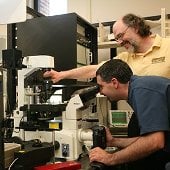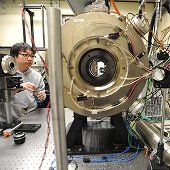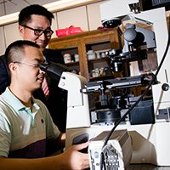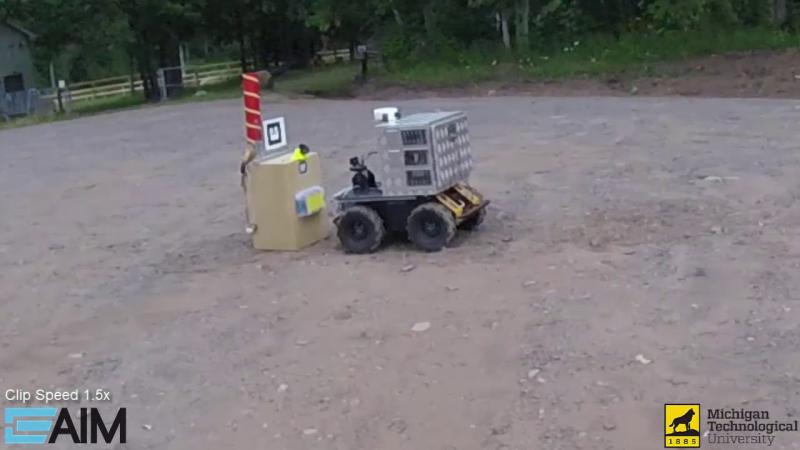
Swept-Field Confocal Microscope
Researchers in the Microfluidic and Interfacial Transport Laboratory (MnIT) are employing the department’s Prairie View swept-field confocal microscope in investigating the behavior of two-phase gas/liquid flows in microchannels.
The confocal imaging assembly consists of a confocal microscope attached to a TE-2000 Nikon inverted microscope with a Prior Scientific ProScan II automated stage; images are recorded with a Pulnix TM-1325 CL or Photron APX-RS high-speed camera. The instrument was modified for imaging both fluorescent and reflected light. Reflectance modification is necessary for PTV/PIV measurement of liquid flows when the fluorescent intensity is too weak and reflective particles must be used. Reflected-light detection also provides a means for studying the dynamics of two-phase flow in the contact line region by capturing light reflected from the gas-liquid interface.
The microscope can be quickly converted between imaging modes by replacing a dichroic mirror assembly with a 50/50 beam splitter. A key advantage of the swept-field confocal design is the use of slit apertures in place of pinholes for producing the confocal optical slices. Images are formed by scanning the sample in one direction only, forming a progressively scanned image. The use of the slit aperture increases the amount of light returning from the sample, allowing for a faster scan rate by reducing the light intensity limitation found in other confocal systems. Currently, the maximum scan rate of the confocal microscope is 3000 fps, being limited only by the firmware of the galvanic mirror.
Location: Microfluidic and Interfacial Transport Lab, MEEM 1001
Contact: Jeffrey Allen

Combustion Vessel
The department’s combustion vessel is highly configurable, 1.1 liters, and optically accessible. The chamber features constant volume; six window ports and eight access ports for instrumentation and valves; a high-speed ICCD camera capable of one million frames per second; and a laser powerful enough to vaporize carbon.
The laser passes through a clear-sapphire window the diameter of a softball, made from a perfect crystal that took a year to grow and polish. The camera captures images of fuel mixing with hot gases and igniting and combusting, courtesy of the laser, within one-thousandth of a second inside the custom-made chamber.
Specs
- Constant-volume, high-pressure (350 bar MAWP), high-temperature (combustion temperatures greater than 2,000K), stainless-steel combustion vessel with optical access
- Custom seven-gas supply system with high-pressure boost capability
- Ultrahigh pressure, multi-fuel compatible liquid-fuel-injection system capable of 4,100 bar injection pressures and multiple fuel usage
- Programmable, multi-pulse solenoid injector driver
- Pulsed Nd:YAG laser and Argon ion laser—used for spray, combustion, and emission imaging
- 2-D Aerometrics TSI phase Doppler particle analyzer system for fuel-spray droplet velocity and size calculation
- Custom computer control and DAQ system for remote control of laboratory
- Exhaust gas analyzer and direct-sampling combustion probe
Location: Lahti Building (Hancock, MI)
Contact: Jeff Naber, Jaclyn Johnson

Integrated Optical Microscopy
This microscope system consists of a bright-field microscope, a phase contrast microscope, an interference reflections contrast microscope, an epi-fluorescence microscope, and a total internal reflection fluorescence microscope. These techniques are quickly interchangeable. The main body is a Nikon Eclipse Ti inverted microscope outfitted with objectives (4x, 10x, 20x, 40x, 60, and 100x), other necessary optical components, and a high-sensitivity, integrated QuanTem 512SC, 16-bit, electron-multiplier CCD digital camera. Halogen, fluorescence, and 488-nanometer-laser light sources are available.
Location: MEEM 1002
Contact: CK Choi
